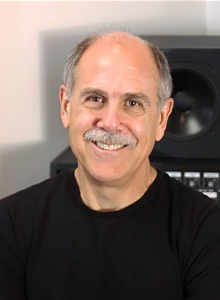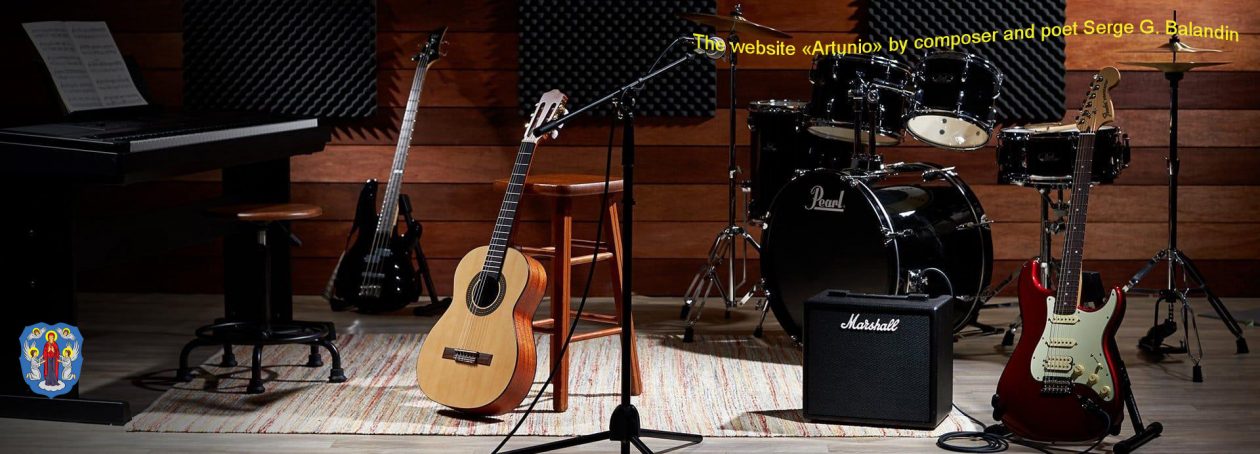
EMINENT PERSONS: DAVE SMITH
Engineer and musician Dave Smith another milestone in the history of electronic music — is a progressive innovator of many modern electronic music revolutionary technologies. One of the first inventors of microprocessor controlled polyphonic and multitimbral synthesizers, the Father of MIDI.
Dave studied at the University of California, Berkeley, where he received a degree in computer science and technology and electronic engineering. In 1972 he bought Minimoog, which pushed him to create his own analog sequencer.
Smith founded Sequential Circuits, and in 1977 he devised Prophet 5 synthesizer, the world’s first polyphonic analog synthesizer with digital control and programming capability. This machine was manufactured by Dave Smith from 1977 to 1984, becoming truly, as the name implies, prophetic for the next generation of synthesizers. Dave Smith set the technical standards of electronic musical instruments, which are still relevant today. Almost every rock and jazz band of the 1970s and 1980s was armed with this unit. Sequential Circuits became one of the most successful synth manufacturersback then.
Prophet 5 was equipped with memory for quick and easy saving and storing settings. Among the most famous Prophet fans there are such bands, as Duran Duran, Kraftwerk, Genesis, Prodigy and Depeche Mode. Kitaro, Jean-Michel Jarre, Vangelis and Dieter Bohlen of «Modern Talking» used to like it as well. The instrument fetured deep powerful bass, string sounds and incredible sound effects, for which he was recognized and adored by musicians all over the world. Nowadays, many performers and composers are still looking for this synthesizer to record and perform their music.
One of the main developers of the MIDI protocol, without which modern electronic music is just inconceivable, Dave Smith came up with the actual abbreviation: MIDI (Musical Instrument Digital Interface). After Smith met Tom Oberheim and the founder of Roland Ikutaro Kakehashi, the idea was first introduced by the Audio Engineering Society in 1981. After a few improvements, at the Winter NAMM Show in 1983, Smith presented Prophet 600 to the public, which was successfully integrated with Roland Jupiter 6. In 1987 Dave Smith was recognized an honorary member of the Association of Audio Engineersfor his achievements in music technology. However, Yamaha was on guard and buried a lot of small and several large electronic music companies, including Sequential Circuits, with the release of its legendary Yamaha DX7. But Dave Smith was awake as well – he became president of the DSD Ink research unit in Yamaha corporation, where he worked on the concept of virtual instruments and synthesizers, on the physical modeling and synthesis of software instrumentsoperating according to the abovementioned principles. Being a unique specialist in the sphere and an in-demand professional at different levels of synthesizer production, Dave Smith founded a research group already in Korg company in 1989. The brightest product by Korg of the early 1990s was the incredible Korg Wavestation. Smith continued his business as the president of Seer Systems, creating the world’s first virtual synthesizer Evolver, which was based on the PC platform – he customized it for Intel Corporation. He reported on this epoch-shaking fact in his speech to Andy Grove at Comdex in 1994. The next version of the second generation of this virtual synthesizer sold around 10 million copies worldwide. In 1997 Smith again developed the unit which became “the world’s first”something (!) — professional virtual synthesizer Reality, which was ranked the highest in the rating presented by the Electronic Musician magazine. The third generation of the software synthesizer, to which Reality belongs, was also awarded the Editors’ Choice Award in 1998. But, despite his achievements, in subsequent years, Dave Smith got clearly indifferent about the very idea of virtual instruments. He stated that he often played the synthesizers he created, but never used the virtual ones, because he didn’t like the feel associated with them, he didn’t like that he needed to use a mouse, keyboard and monitor to control the instrument. Dave returned to work on the hardware, starting with the development of Evolver synthesizer. He said that the sound of many virtual synthesizers was pretty good.This aspect could not be underestimated, given that everything wentabout the fact that in the near future all virtual synthesizers would be free, legally free.But it still was all about the feel and attitude. The musician must choose an instrument that he could touch, with which he had a contact, which he could get used to, rather than something that was only displayed on the screen. Even if you had a midi controller, it was just a unit with 20 knobs of undefined purpose that you needed to configure individually for each program and you had to update every six months the software, while constantly encountering problems with availability and other issues. Smith was sure that a musical instrument must have its own character, uniqueness, so that he would know it was hisinstrument. He liked the way guitar players approach this. They didn’t just choose, for example, «Strat». They knew exactly that «Strat» was what they needed, a certain year and location of production, exactly the instrument which the guitar playerwould feel like talking to. They got used to the instrument, they knew it thoroughly, felt it. All this was absolutely absent in virtual synthesizers. They didn’t have such tangible, unique and characteristic qualities. And Dave believed that the character of the instrument was one of the fundamental principlesof music. But what was good in virtual synthesizers was that they were either cheap or free; that basically they sounded pretty good, although, of course, not like real analog instruments. This was a good way for young people to understand how a synthesizer worked and to join the world of electronic music. The company Dave Smith Instruments was born in 2002 to release analog and hybrid synthesizers, again: Evolver, Poly Evolver, Prophet ’08, Mopho, Tetra, Pro-2 and, of course, the flagship Prophet 12… As one of Dave’s faithful companions, engineer Andrew McGowan used to say that Dave was about 30 and he just couldn’t sit at one place, he craved for action. He couldn’t do the same thing for a long time. He was constantly working on something. That’s how we got so many ideas implemented by him! Dave Smith said in an interview that software companies began to produce hardware synths (clearly hinting at Arturia, which, by the way, succeeded both in software and in hardware). So, there’s a “hard-ware” guarantee that Uncle Dave will continue to please us with new synthesizers. In the endless pursuit of success while promoting everything analog, he goes even to cooperation with Tom Oberheim and together they produce polyphonic analog OB-6 and its sound module both based on DSI product. In 2005 Smith was admitted to the Mix Foundation TECnology Hall of Fame for Technical Excellence and Creativity. In 2013 he and Ikutaro Kakehashi received the Grammy award for their contribution to the development of MIDI technologies, and in 2015 Dave Smith regained his right to the “Sequential” brand name from Yamaha, and released Prophet~6 already branded as Sequential unit.
Serge G. Balandin
Published: 17:30 | 10.06.2016
Views: 175
